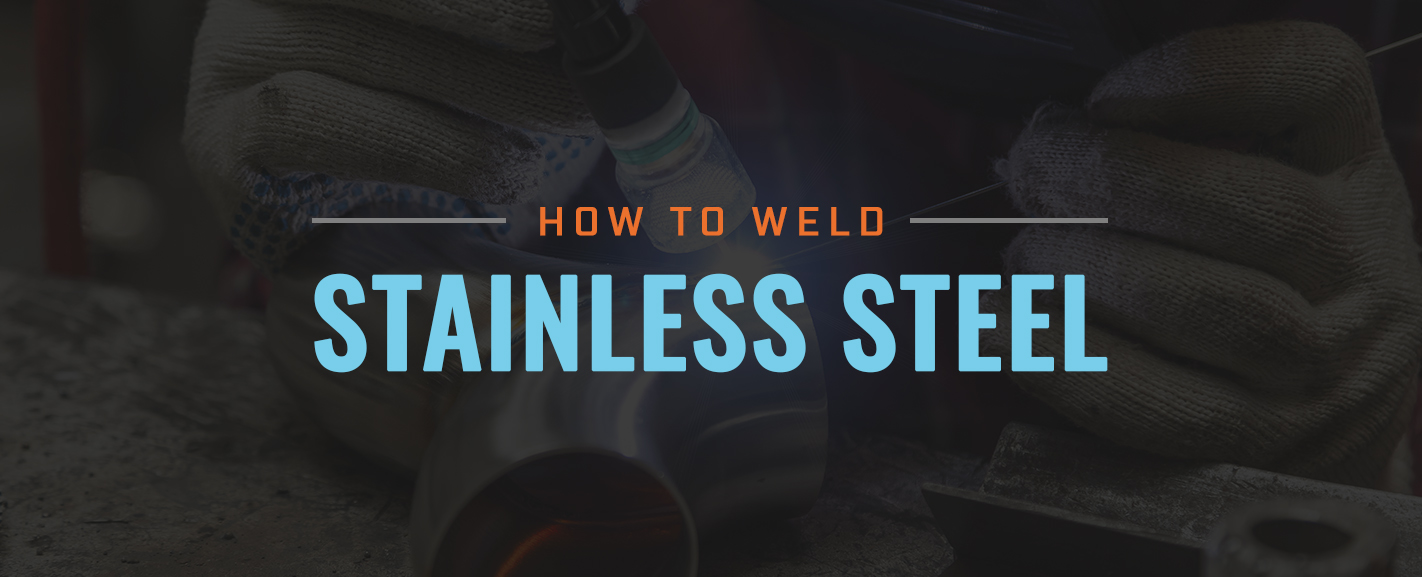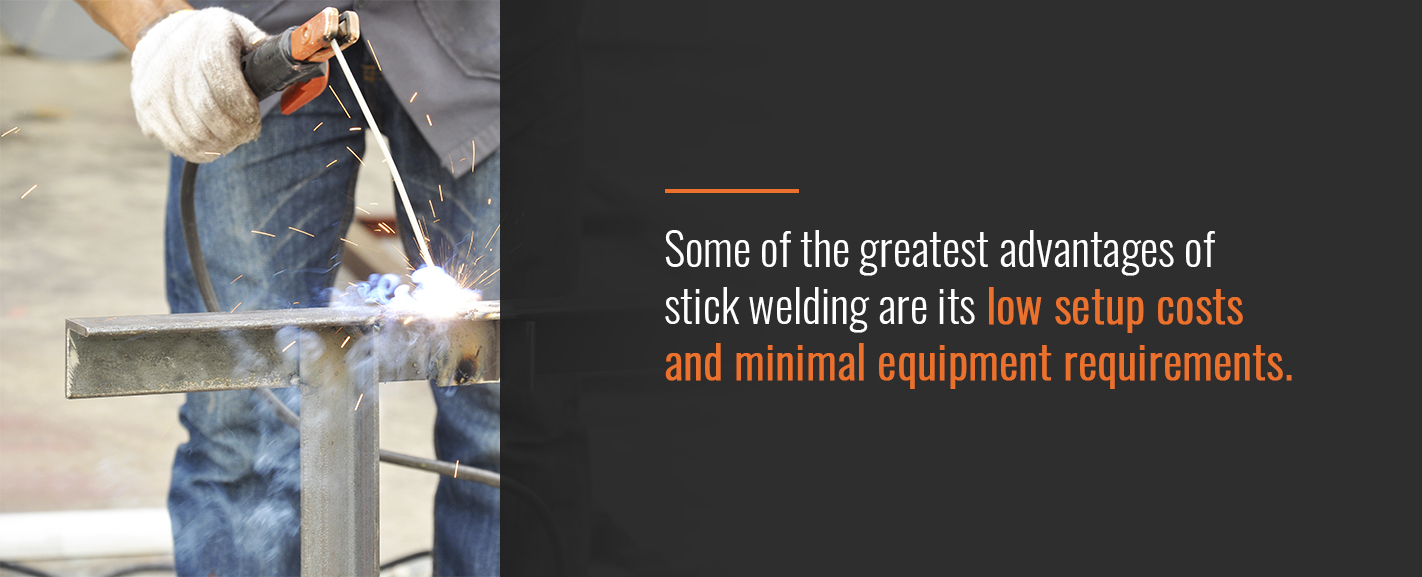

Stainless steel is known for being long-lasting and durable. You can find it in nearly any household with growing popularity, but there are important considerations when welding this material. The process requires a skilled professional willing to educate themselves on the best practices, from preparation to after-weld care.
Learn more about how you can weld stainless steel and the best techniques for doing so.
Table of Contents
Stainless steel is a very popular material used to manufacture various products, from kitchen appliances to auto bodies. It is 100% recyclable and a versatile type of metal that can work for many applications. In 2019, the global market size for stainless steel was more than $111 billion and it continues to grow today.
With proper care, you can weld stainless steel. While its heat and corrosion resistance makes stainless steel a hot commodity, it can be a tricky material to work with. Its thermal properties can pose an even greater challenge for welders.
Welding stainless steel can be challenging. The wrong move could lead to problems like warping or discoloration. Because of this, it is especially important to pick the right method for your project and the results you want.
When deciding which method is best, consider the following first:
Once you’ve chosen your preferred method, you’ll need to select the right electrode for the job. Gather all necessary personal protective equipment (PPE) to protect yourself and others from the dangers of welding.
When you have these things sorted, you can move through the three stages of the welding process.
Stainless steel is especially sensitive, and you can often see every imperfection from the welding process. Even small dust particles from carbon steel can leave behind unsightly blemishes. Because of this, it is best to prepare your work environment before getting down to business.
Cleaning surfaces and tools that will come in contact with the stainless steel you’re working with is essential to avoid contaminated welds. Ensure your metal sheets align correctly and set up welds in accordance with the required specifications. If you are working with thicker pieces, you may need to chamfer or bevel the edges to prepare for making the weld.
The welding process differs slightly, depending on the method you choose. When making the weld, consider the following for the best results:
By following these guidelines, welders can produce the best work and stay safer while doing it.
Once you’re finished welding, it is important to clean the stainless steel. There are three methods for after-weld care:
Stainless steel works best with electrochemical weld cleaning called electropolishing. This process uses electricity and the oxidation from acidic electrolytes to remove stains and surface roughness while creating that shiny appearance that stainless steel is known for.
Welders should take extra caution when working with this material. A number of its characteristics make it difficult to perfect. For example, stainless steel retains heat, causing warping. Its surface is easy to mark and prone to scratches. A phenomenon called sugaring can cause discoloration that leads to rust and corrosion down the line. With all these factors to consider, it is important welders know how to handle stainless steel for the best end result.
The following methods are the best ways to weld stainless steel:
Tungsten inert gas (TIG) welding, short for gas tungsten arc welding, is considered the best way to weld stainless steel.
A professional will TIG weld stainless steel for critical joints or projects that need a lot of control. This technique is good for precise welds and sections that are especially thin because this process forms a low heat input. Welders often use argon gas to protect and cool the tungsten because it produces less smoke than alternative options and can prevent unsightly heat tint.
While it is one of the slowest methods, TIG welding has many benefits. It creates low electrode wear and is pore-free, resulting in a narrow fusion zone and less oxidation residue to clean up afterward.
Metal inert gas (MIG) welding, also called gas metal arc welding, is another common method for working with stainless steel. MIG techniques use electricity to melt and join metal together. Some people refer to this technique as the hot glue of welding.
When MIG welding stainless steel, a wire connects to a source of direct electricity that acts as an electrode passing through a welding gun. This method has multiple advantages, including:

Stick welding is a very common method with many benefits. It works by using electricity to melt a metal joint and electrode simultaneously, allowing the welder to fuse the pieces together while filling the joint.
Welders can use it with various metal types, including stainless steel. However, this technique is not ideal for especially thick or thin sheets.
Some of the greatest advantages of stick welding are its low setup costs and minimal equipment requirements. A professional welder and the right electrode are all you need. It is a beginner-friendly method ideal for simple stainless steel projects.
Resistance welding uses force that converts to heat. The heat melts the metal sheets at each point, where they join with another sheet, resulting in a sturdy metal joint.
One of the benefits of using resistance welding with stainless steel is that it produces fewer fumes and is healthier for a working environment. It is more cost-effective than other methods and very efficient. Manufacturers can automate resistance welding, making it even more efficient.
Here are answers to some more common questions about welding stainless steel.
Stainless steel’s low thermal conductivity leads to heat concentration and an increased risk of distortion and warping. Its chemical composition can also cause cracking and other defects if improperly handled.
The most commonly welded type of stainless steel is austenitic stainless steel. This type is favored due to its ease of welding and versatility in various applications.
Welding stainless steel demands proper preparation, appropriate equipment and the right technique. Key requirements include using suitable filler materials, selecting the correct welding method and employing purging gases like argon to prevent oxidation.
Stainless steel warps when welded due to its low thermal conductivity, which causes heat to concentrate in the weld area. This heat buildup leads to expansion and contraction, resulting in distortion and warping.
Pure argon or argon and carbon dioxide mixtures are commonly used for MIG welding stainless steel. For TIG welding, argon is typically used, sometimes with a small addition of hydrogen to reduce surface oxidation.
To minimize distortion, introduce the least possible amount of heat into the welded piece. Select the appropriate size electrode to optimize the weld pass. Proper weld design and execution and controlling the heat input are also crucial in reducing distortion.
Sugaring is a type of oxidation that occurs during welding, appearing as sugar granules on the weld. It happens when the metal oxidizes due to exposure to oxygen, compromising the weld’s integrity and corrosion resistance.
The filler material should match the type of stainless steel being welded.
PBZ is Pennsylvania’s one-stop shop for resourceful metal manufacturing. Our team of experienced professionals can help you with multiple stages in the manufacturing process, from fabrication to logistics.
Interested in learning more? Contact us on our online form or get a custom quote today!